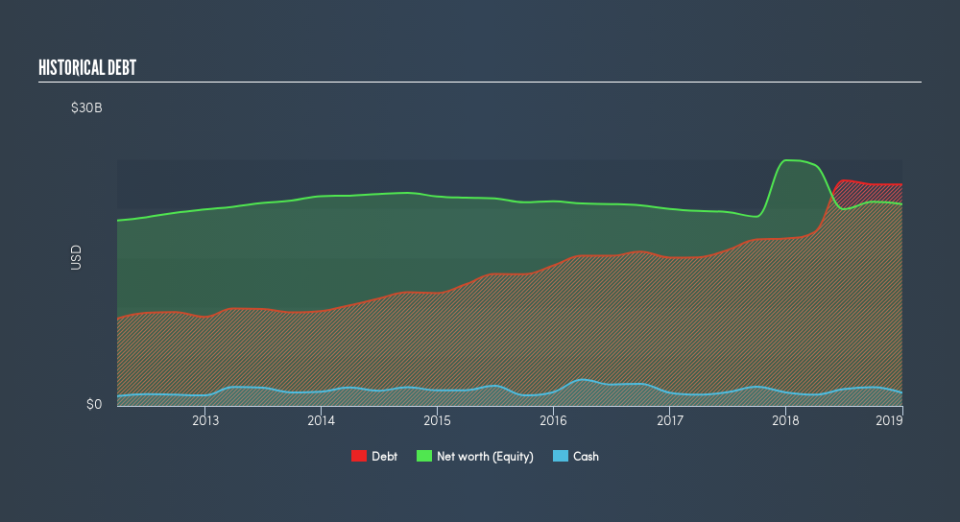Is Union Pacific Corporation’s (NYSE:UNP) Balance Sheet A Threat To Its Future?

The size of Union Pacific Corporation (NYSE:UNP), a US$120b large-cap, often attracts investors seeking a reliable investment in the stock market. One reason being its ‘too big to fail’ aura which gives it the appearance of a strong and stable investment. But, the health of the financials determines whether the company continues to succeed. This article will examine Union Pacific’s financial liquidity and debt levels to get an idea of whether the company can deal with cyclical downturns and maintain funds to accommodate strategic spending for future growth. Note that this commentary is very high-level and solely focused on financial health, so I suggest you dig deeper yourself into UNP here.
See our latest analysis for Union Pacific
Does UNP produce enough cash relative to debt?
Over the past year, UNP has ramped up its debt from US$17b to US$22b , which accounts for long term debt. With this growth in debt, the current cash and short-term investment levels stands at US$1.3b , ready to deploy into the business. On top of this, UNP has produced cash from operations of US$8.7b during the same period of time, resulting in an operating cash to total debt ratio of 39%, meaning that UNP’s current level of operating cash is high enough to cover debt. This ratio can also be a sign of operational efficiency as an alternative to return on assets. In UNP’s case, it is able to generate 0.39x cash from its debt capital.
Can UNP meet its short-term obligations with the cash in hand?
With current liabilities at US$4.6b, it appears that the company may not be able to easily meet these obligations given the level of current assets of US$4.2b, with a current ratio of 0.9x.
Can UNP service its debt comfortably?
Considering Union Pacific’s total debt outweighs its equity, the company is deemed highly levered. This is not unusual for large-caps since debt tends to be less expensive than equity because interest payments are tax deductible. Accordingly, large companies often have an advantage over small-caps through lower cost of capital due to cheaper financing. We can test if UNP’s debt levels are sustainable by measuring interest payments against earnings of a company. A company generating earnings after interest and tax at least three times its net interest payments is considered financially sound. For UNP, the ratio of 10.18x suggests that interest is comfortably covered. High interest coverage is seen as a responsible and safe practice, which highlights why most investors believe large-caps such as UNP is a safe investment.
Next Steps:
UNP’s high cash coverage means that, although its debt levels are high, the company is able to utilise its borrowings efficiently in order to generate cash flow. But, its lack of liquidity raises questions over current asset management practices for the large-cap. I admit this is a fairly basic analysis for UNP’s financial health. Other important fundamentals need to be considered alongside. I recommend you continue to research Union Pacific to get a better picture of the stock by looking at:
Future Outlook: What are well-informed industry analysts predicting for UNP’s future growth? Take a look at our free research report of analyst consensus for UNP’s outlook.
Valuation: What is UNP worth today? Is the stock undervalued, even when its growth outlook is factored into its intrinsic value? The intrinsic value infographic in our free research report helps visualize whether UNP is currently mispriced by the market.
Other High-Performing Stocks: Are there other stocks that provide better prospects with proven track records? Explore our free list of these great stocks here.
We aim to bring you long-term focused research analysis driven by fundamental data. Note that our analysis may not factor in the latest price-sensitive company announcements or qualitative material.
If you spot an error that warrants correction, please contact the editor at editorial-team@simplywallst.com. This article by Simply Wall St is general in nature. It does not constitute a recommendation to buy or sell any stock, and does not take account of your objectives, or your financial situation. Simply Wall St has no position in the stocks mentioned. Thank you for reading.

